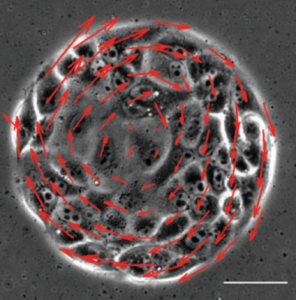
Living organisms are composed of a variety of cells that form colonies with other cells, divide, migrate and in general respond to stimuli from the external environment. These functions are not only crucial for processes such as embryo shaping and wound healing, but also influence cancer growth and invasion. A number of sophisticated quantitative techniques in molecular biology, optical physics and mechanical manipulations have clearly demonstrated that mechanical forces as small as a few pico-newtons at a sub- cellular level and up to tens of nano-newtons within a cell colony, are vital in orchestrating these complex multi-cellular interactions. However, the data obtained from the experiments is often enormous and not fully informative in itself. Hence to understand the crux of the cellular phenomena these experiments are often to be accompanied with predictive mechanics and physics based computational models.Our research group works on developing such quantitative models to understand how cell division, cell migration and cell rheology controls cell migration in colonies. In collaboration with researchers in physics and biology, we develop computational techniques based on structural mechanics, finite element method, statistical mechanics and thermodynamics with the eventual goal of understanding how mechanics guides development of embryo, healing of wounds and formation of organs in living systems.
Prof. Mandar M Inamdar
